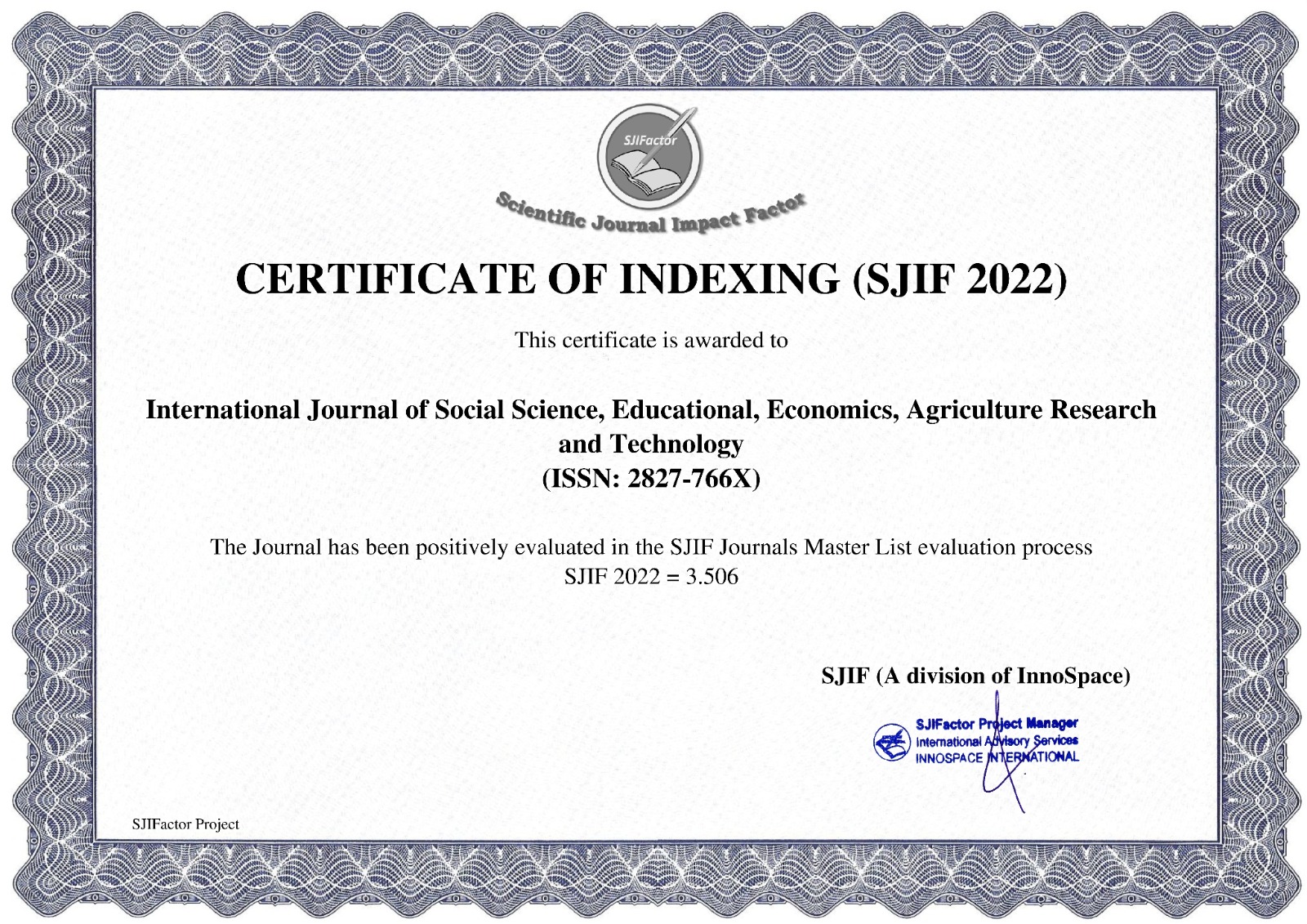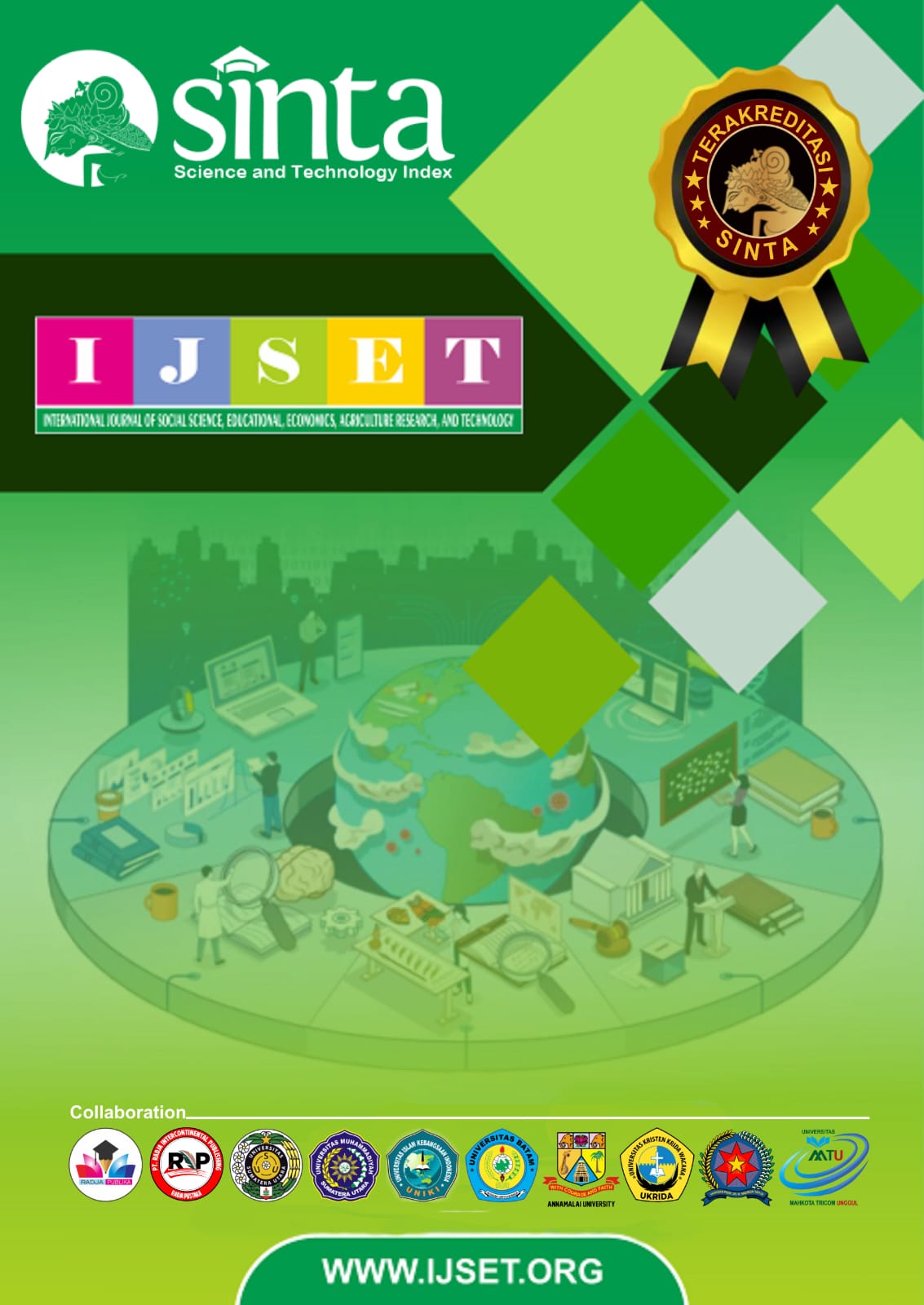REVIEW OF THE USE OF UV-VIS SPECTROPHOTOMETRY IN ANALYSIS ACTIVE COMPOUNDS IN HERBAL PRODUCTS
Main Article Content
Nurul Azizah
Firda Sahara Nida
Siti Nurdiana
Sheva Firdaus. N
La Ode Akbar Rasydy
UV-Visible spectrophotometry (UV-Vis) is one of the most widely used instrumental analytical methods in the fields of pharmacy, food science, and analytical chemistry, particularly for determining the concentration of active compounds in various types of samples. The working principle of UV-Vis spectrophotometry is based on the ability of a compound to absorb light at a specific wavelength, resulting in an absorbance value proportional to the concentration of the substance in solution. This method is considered efficient due to its relatively simple operation, short analysis time, and lower cost compared to other instrumental methods such as HPLC, AAS, or GC-MS. In addition, UV-Vis spectrophotometry can be applied to a wide range of compounds containing chromophoric groups, making it suitable for analyzing herbal products that consist of complex natural matrices. This study aims to review the application of UV-Vis spectrophotometry in the analysis of active compounds in herbal products through a literature review of ten relevant and recent scientific journals. Based on the results of the review, it was found that UV-Vis spectrophotometry is widely used to analyze compounds such as flavonoids, vitamin C, caffeine, paracetamol, and oxalates derived from natural sources such as tea, fruits, vegetables, as well as traditional herbal preparations such as jamu and supplements. In addition, this method is also applied in solubility studies of active compounds within drug delivery systems such as Self-Nanoemulsifying Drug Delivery Systems (SNEDDS), analytical method validation, and evaluation of compound stability in final formulations. Several studies also demonstrated the ability of UV-Vis spectrophotometry to detect the presence of synthetic contaminants in herbal products quickly and simply. From the overall findings, it can be concluded that UV-Vis spectrophotometry plays a significant role in the development, formulation, and quality testing of herbal-based products. This method is not only practical and efficient but also capable of producing reliable quantitative data that can be applied in various research and industrial contexts.
BPOM. (2022). Annual Report on Supervision of Traditional Medicinal Products. Jakarta: BPOM Supervisory Agency
Republic of Indonesia Food and Drug Administration.
Dalimartha, S. (2010). Atlas of Indonesian Medicinal Plants (Volume 1). Jakarta: Penebar Swadaya.
Harahap, U., Satria, D., & Meilani, D. (2015). Validation of Flavonoid Level Determination Method in Soursop Leaf Extract Using UV-Vis Spectrophotometry. Indonesian Phytopharmaca Journal, 2(1), 22–28.
Ministry of Health of the Republic of Indonesia. (2017). Indonesian Health Profile 2017. Jakarta:
Data and Information Center of the Ministry of Health of the Republic of Indonesia.
Putri, DA, Susilowati, A., & Pramesti, F. (2021). Study of Curcumin Solubility in SNEDDS System
Using the UV-Vis Method. Udayana Journal of Pharmacy, 10(3), 150–157.
Rahmawati, N., Nugroho, WA, & Fitriani, I. (2022). Utilization of UV-Vis in Validation and
Analysis of Herbal Products. Journal of Pharmaceutical Sciences, 6(2), 105–114.
Harlianti, R., Irawati, LF, & Rahayu, S. (2016). The Influence of Pharmacist Counseling on Compliance
Drug Use. Indonesian Journal of Clinical Pharmacy, 5(1), 12–18.
Kurniawati, AV, Pramushinta, IAK, Sinulingga, AS, & Indriani, N. (2024). Analysis
Comparison of total flavonoid levels of green tea and black tea using the UV-Vis spectrophotometry method. Journal of Clinical Science Health Analysis, 12(2), 204–213.
Astuti, IY, Marchaban, Martien, R., & Nugroho, AE (2017). Validation of UV spectrophotometry method
Vis for solubility study of pentagamavunone-0 in self-nanoemulsifying drug delivery system. Pharmacy, 14(1), 127–136.
Dwihartanti. (2017). Validation of UV-Vis spectrophotometry method for solubility studies. Pharmacy, 14(1),
–136.
(2020). Validation of Analysis Method
Vitamin C in Pineapple Fruit and Chips by UV-Vis Spectrophotometry. Scientific Journal of Pharmacy, 8(1), 16-24.
Dzurriatul Maghfiroh, Eva Monica, Muhammad Hilmi Afthoni. (2022). Development and Validation
Uv Vis Spectrophotometry Method Derivative Method For Analysis Of Caffeine In Supplements. Scientific Journal Of Science & Technology Vol. 2 No. 2-FARMASI.
Haryanto, Sitti Nur Atika Ningsih, Nabila Syahrani Anwar, Farda Nur Annisa, Sri Purnama, Meilinda
Anastasya, Muh Abdiyal, Ispa Novianti Nanrang, Adinda Safira, Ratu Raisyah Rahmatia Rumbara, Liska Nur. (2025). Analysis of Paracetamol Content Levels in Herbal Medicine for Aches and Pains Using UV VIS Spectrophotometry. Journal of Pharmaceutical and Health Sciences Students Volume 3 Number 1.
Khoirul Ngibad, Dheasy Herawati. (2019). Comparison of Measuring Vitamin C Levels Using
Uv-Vis Spectrophotometry At Uv And Vis Wavelengths. Borneo Journal Of Medical Laboratory Technology Volume 1 No. 2.
Niken Ambar Pratiwi. (2018). Comparison of Validation of Copper(Ii) Ion Analysis Methods Without
Complexing And With Na-Diethyldithiocarbamate Complexing By Uv-Vis Spectrophotometry. Journal of Basic Chemistry Volume 7 No 3.
Analysis of SPF Values on
Sunscreen Products Using Uv-Vis Spectrophotometry Method. Journal of Pharmacy and Herbal Vol.5 No.2.
Rusvirman Muchtar, Yusi Fudiesta, Sukrido, Devi Windaryanti. (2017). Analysis of the Influence of Time
Heating on Oxalate Levels in Green Spinach (Amarantus Hybridus) Using the Uv-Vis Spectrophotometry Method. Journal of Science and Health. 2017. Vol 1. No 8.






















